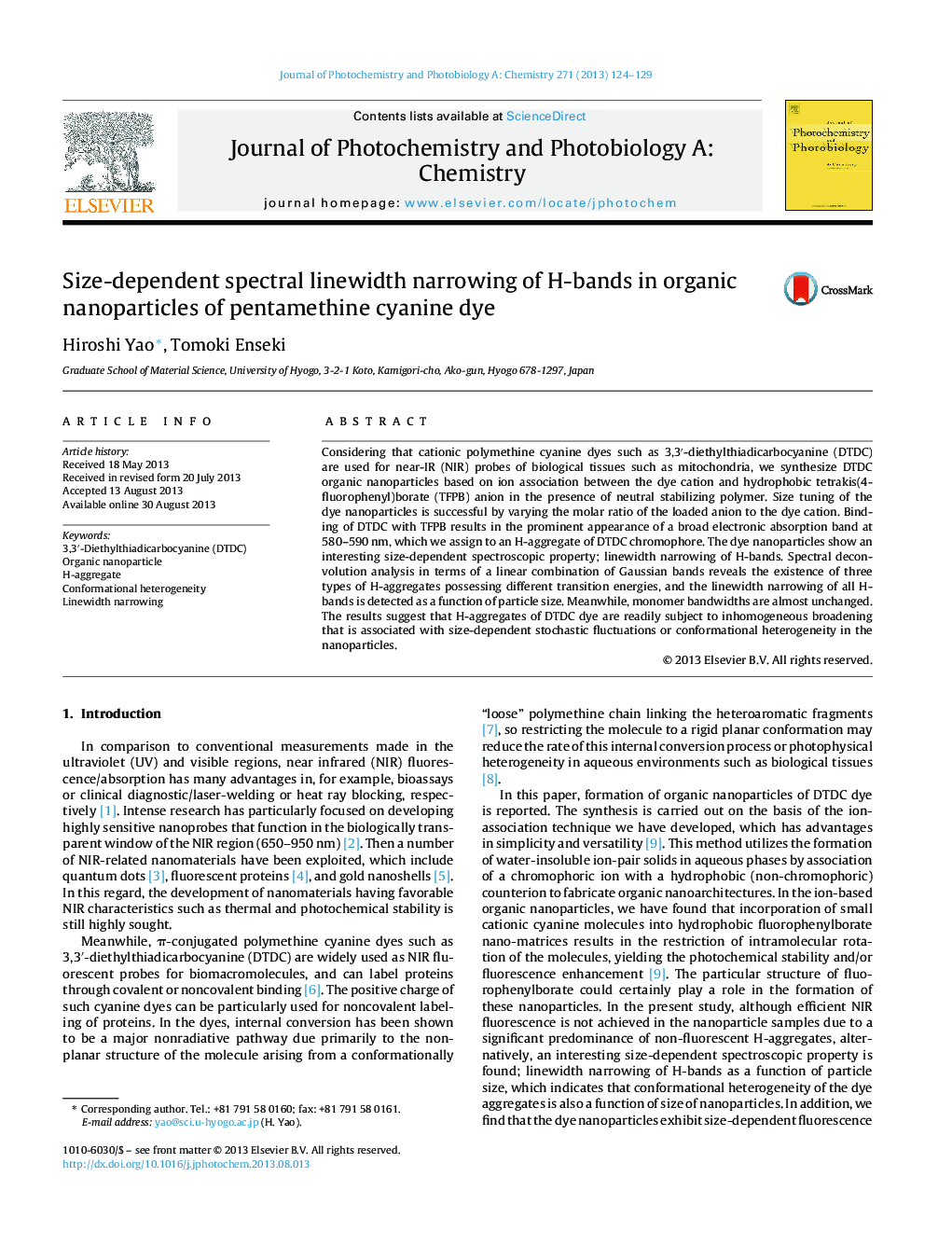| Article ID | Journal | Published Year | Pages | File Type |
|---|---|---|---|---|
| 27291 | Journal of Photochemistry and Photobiology A: Chemistry | 2013 | 6 Pages |
•Organic nanoparticles of pentamethine cyanine dye are fabricated based on ion-association.•Size tuning of the dye nanoparticles is successful.•The dye nanoparticles show a linewidth narrowing of H-bands as a function of particle size.•H-aggregates of the dye are readily subject to inhomogeneous broadening in the nanoparticle.•This is associated with size-dependent conformational heterogeneity of the aggregates.
Considering that cationic polymethine cyanine dyes such as 3,3′-diethylthiadicarbocyanine (DTDC) are used for near-IR (NIR) probes of biological tissues such as mitochondria, we synthesize DTDC organic nanoparticles based on ion association between the dye cation and hydrophobic tetrakis(4-fluorophenyl)borate (TFPB) anion in the presence of neutral stabilizing polymer. Size tuning of the dye nanoparticles is successful by varying the molar ratio of the loaded anion to the dye cation. Binding of DTDC with TFPB results in the prominent appearance of a broad electronic absorption band at 580–590 nm, which we assign to an H-aggregate of DTDC chromophore. The dye nanoparticles show an interesting size-dependent spectroscopic property; linewidth narrowing of H-bands. Spectral deconvolution analysis in terms of a linear combination of Gaussian bands reveals the existence of three types of H-aggregates possessing different transition energies, and the linewidth narrowing of all H-bands is detected as a function of particle size. Meanwhile, monomer bandwidths are almost unchanged. The results suggest that H-aggregates of DTDC dye are readily subject to inhomogeneous broadening that is associated with size-dependent stochastic fluctuations or conformational heterogeneity in the nanoparticles.
Graphical abstractFigure optionsDownload full-size imageDownload as PowerPoint slide
